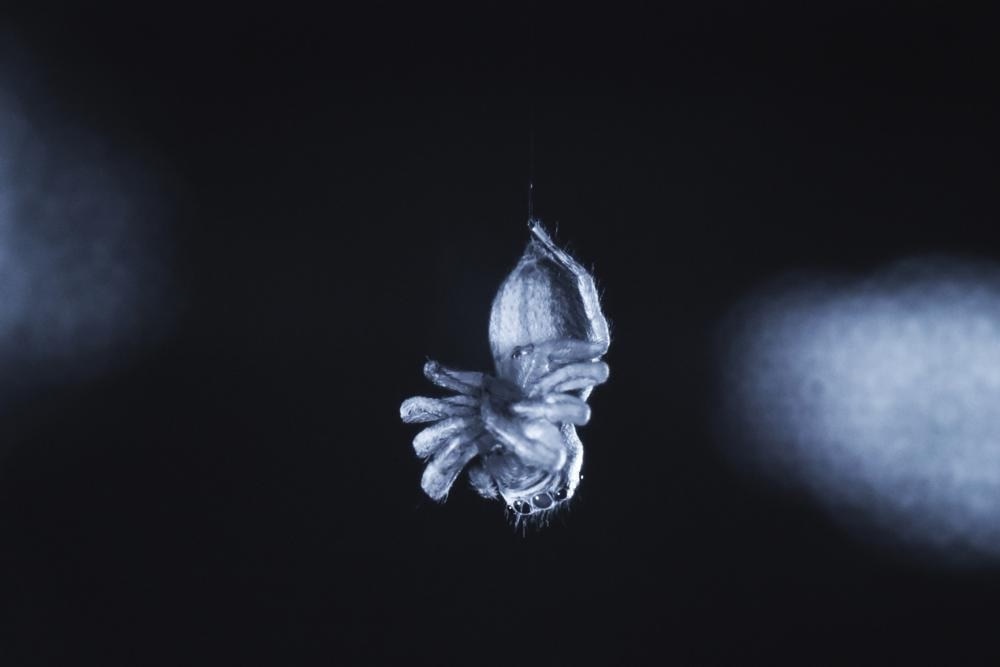Create a free profile to get unlimited access to exclusive videos, sweepstakes, and more!
Do spiders have nightmares? New evidence suggests they sleep and dream
With a little firefly in the corner of their web to push back the dark.

The scientific field of dreams is as nearly as stacked with debate and drama as its cinematic namesake, Field of Dreams (now streaming on Peacock!). There are those who believe that sleeping, and dreaming, are the purview of a few highly evolved organisms including humans and relatively close relatives, while there are others who believe that all living things sleep, even if they don’t all dream.
Despite spending a considerable portion of our lives asleep, we’re still not entirely sure why we do it. Certainly, there are benefits both mental and physical. If we don’t sleep on a fairly regular basis, things start to go awry pretty quickly, but mostly we sleep because we get tired.
For a while, it was unclear if all organisms sleep and even if they do, to what degree. Even organisms relatively similar to us have very different relationships to sleep. Giraffes, for instance, despite a moderately stressful life avoiding predators in sub-Saharan Africa, sleep for about 4.5 hours per day. That accounts for 30 minutes of deep sleep combined with several minutes-long standing power naps throughout the day. Dolphins, on the other hand — or fin, as they case may be — manage to power down only half of their brains at a time, leaving the other half active to handle the important task of breathing in their watery environment. In that way, it might be that they’re never wholly asleep, instead treating their brains like a pair of spare batteries, charging one while the other is in use.
The question of whether all organisms sleep is still a matter of some debate, largely because it’s so difficult to measure. In humans, it’s clearly demonstrated by a motionless state, diminished response to stimuli, and the presence of rapid eye movements, among other criteria. One can see how that might be difficult to confirm in something like a jellyfish or a plant, although that hasn’t stopped researchers from trying.
Now, we have evidence that something quite similar to human sleep exists in at least some spiders. Daniela C. Rößler from the Department of Biology at the University of Konstanz, and colleagues, studied jumping spiders for signs of sleep or a sleep-like state. Their findings, published in the Proceedings of the National Academy of Sciences, are as adorable as they are interesting.
The team observed jumping spiders suspending themselves from a single line of silk webbing where they rested during the night. During that period, the spiders were largely inactive, suggesting they might be sleeping but determining that outright proves a challenge in many invertebrates. That’s largely because most lack any external signaling that sleep is occurring. Insects and spiders can’t close their eyes, so it’s difficult to tell if they’re asleep or simply not moving.
Jumping spiders, however, have a couple of behaviors and characteristics which make them well-suited for studying sleep. Spiders were placed in an enclosure and observed for a 12-hour period between 7:00 p.m. and 7:00 a.m. Researchers also trained a camera on the spiders and utilized a neural net to track multiple body parts, including the eyes and limbs.
They found that during these periods of rest, spiders twitch their legs and spinnerets in much the same way as a dog might kick its legs while sleeping. To watch them sleep gives the appearance that they might be dreaming but the limb motions could simply be latent physical activity unrelated to any mental experience. The kicker is what happened with their eyes.
Moving eye parts are something many arthropods don’t have, but jumping spiders are special. While jumping spiders don’t move their eyes in quite the same way as we do, they can reposition their retinae to adjust their view, and that gave the neural net something to latch onto. Researchers found that while jumping spiders sleep, their retinae periodically shift back and forth. The duration and interval of those eye movements increased throughout the night, mirroring what is seen in people experiencing REM sleep.
The study provides compelling evidence that jumping spiders, and possibly a whole host of animals of similar evolutionary development, experience sleep. More than that, they probably dream. We’re left to wonder what spiders dream about and, perhaps more terrifying, if they have nightmares. We’re not sure we’d like to meet the thing that makes spiders wake in a cold sweat. Then again, if spiders have nightmares about anything it’s probably us, something to consider the next time you start rolling up a newspaper.


























